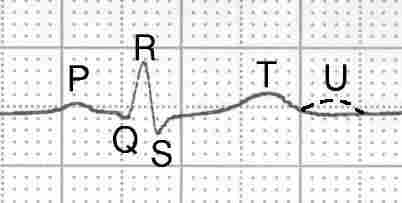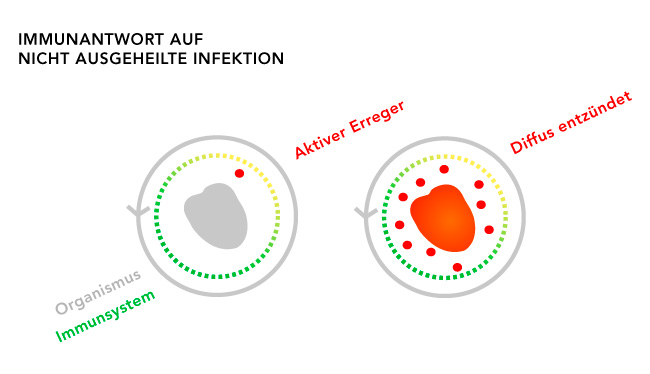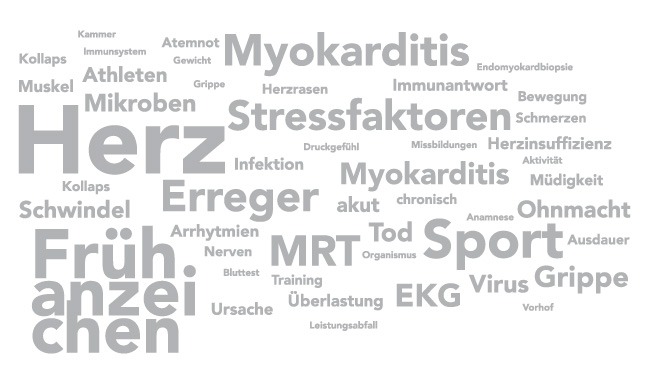During the last weeks the heart of athletes moved into the center of concern. There have been cases of sudden cardiac death, there have been athletes withdrawing from the sport because of heart issues. I thought it may be of interest for you as an endurance athlete to get an idea about what is still a normal heart and when is a heart under suspicion to be a sick heart.
Sudden cardiac death needs to be questioned. If one had known the history, the decent symptoms before the incident, if one had interpreted the signs correctly at the right time, maybe distress could have been prevented. An ECG can give a lot of information, if one is able to read it right. Looking at an ECG without knowing that it is an athlete’s heart, may lead to misinterpretation and panic. A physician needs the experience to read the curve. There are common and training-related abnormalities (up to 80%) of an athlete’s ECG. These physiological ECG abnormalities are more prevalent in highly trained endurance athletes than in other athletic subgroups.

An endurance athlete’s heart undergoes structural changes that show in an ECG, not only the heart muscle thickens, also the conduction system of the heart works with a different rhythm. Regular physical work-out leads to an increased vagal tone which means that the heart beats slower (bradycardia) – of course, you know and feel that. Slight arrhythmic heart beats are not uncommon either. Especially, if the heart beats very slowly. These phenomena are functional which means they normalize during exercise, they don’t lead to dizziness or passing out and they are reversible, e.g. if training is discontinued. Cases of less than 30 beats/min and marked sinus arrhythmia needs closer attention, it may be a pathological condition like a sick sinus syndrome (those guys receive a pacemaker).It may help you to feel less stressed if you know that symptoms that resolve with exercise or hyperventilation (fast and and deep breathing) are of functional origin, and exclude a cardiovascular disease. If symptoms of arrhythmia don’t subside then underlying structural heart diseases need to be considered.
Trained athletes often exhibit a left ventricular hypertophy that shows in an ECG (only QRS modifications). It reflects a physiological left ventricular remodelling with increased left ventricular wall thickness and chamber size. As the skeletal muscle undergoes changes, so does the heart.
Early repolarisation ECG patterns are a physiological phenomenon of the young heart muscle and the trained heart muscle (ST-T changes). It is very typical and with experience it can be distinguished from pathological conditions. Depolarization and repolarziation are the electrical correlates of muscle contraction and release.
Uncommon and training-unrelated ECG changes are rare but if overlooked they may be dreadful. Most cardiovascular conditions in young competitive athletes are silent and unlikely to be suspected and diagnosed on the basis of spontaneous symptoms. Therefore an 12-lead ECG screening to identify asymptomatic athletes may eventually save lives.
Conclusion: It seems bizarre but if you experience cardiac symptoms that disappear with training your heart is most likely to be fit. If you don’t feel any symptoms, you may drop dead just for a sudden. But keep in mind less than 5% suffer from uncommon, training-unrelated cardiac diseases.
In this article I am not mentioning the problem of virus infections that may affect the heart and lead to cardiomyopathy if not healed up. Young hearts can take a lot, until a heart failure with all its symptoms appears.
Source: Corrado D, Biffi A, Basso C, et al: 12-lead ECG in the athlete: physiological versus pathological abnormalities. British Journal of Sports Medicine, 43: 669-676, 2009



